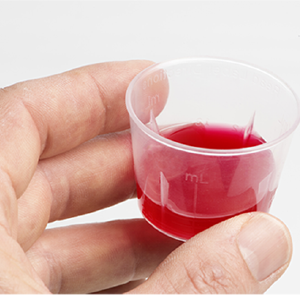AMA Recommends Painkiller Prescribing Change that Could Save Lives
In June 2016, the American Medical Association recommended that medical practitioners abandon the practice of using pain as the “fifth vital sign.” Pain as a vital sign has not been in use for very long but over time, has contributed to massive increases in painkiller prescribing that launched our epidemic of opioid addiction and overdoses.
Where Did “Pain is the Fifth Vital Sign” Come From?
Back in the mid-1990s, groups like the American Pain Society began to encourage healthcare providers to check patients for pain the same as they did for other vital signs — blood pressure, pulse, respiratory rate and temperature. Support for use of pain as a vital sign spread throughout the field of healthcare until it became a new standard of care.

That initial recommendation by Dr. James Campbell of the American Pain Society was followed by a similar mandate by the Joint Commission on Accreditation of Healthcare Organizations (JCAHO). After this mandate, healthcare facilities who wanted be get accredited by JCAHO had to accept the fifth vital sign as an official guideline.
Before this idea gained widespread support, there was not as much focus on eliminating pain. Of course, any seriously ill or injured person would be treated for pain. But moderate pain might only be treated with a recommendation to take an over-the-counter pain medication as needed.
The Misleading Marketing of OxyContin
Soon after Dr. Campbell’s recommendation, sales reps from Purdue Pharma made the rounds of doctors’ offices to promote their new painkiller OxyContin. They raved about the drug’s ability to reduce severe pain for an extended time. They also described its low addictiveness — a claim later disproven in federal court. Gradually, more doctors began to go directly to opioids for patient pain — and they were often sending patients home with a 30-day supply after minor surgeries or injuries.
American medicine chests with bottles nearly full of leftover painkillers provided the spark that ignited widespread opioid abuse — and eventually addiction. One person recovering from minor surgery might eat up the whole bottle of painkillers for the warm, fuzzy feeling they gave him. A teen in the home might steal some pills to share with friends at a party. By 2011, 52 million Americans had misused or abused a prescription drug. Now, out of 47,000 drug overdose deaths each year, nearly 20,000 are caused by painkillers.
More policy changes drove the growth of painkiller prescribing. For example, patient satisfaction surveys ordered by Medicare resulted in financial penalties for hospitals not scoring well. But patients soon realized they could manipulate doctors to get addictive painkillers by threatening to score the doctor and hospital low on the survey.
Why This Current Recommendation is Good News
This new recommendation shifts focus away from pain relief as a major factor guiding medical and prescribing choices. It may take a while for doctors to integrate this shift in their decisions and it may take even longer for patients to accept the change.
In a flanking move, the Centers for Disease Control and Prevention recently issued a thorough set of guidelines for both doctors and patients to advise them on the best ways to prevent painkiller abuse or addiction. “Start low and go slow,” they recommended, meaning start a person on the lowest practical dosage of a pain reliever and increase the dosage slowly — more advice that helps minimize the harm from these drugs.
States have begun to add their own regulations — some requiring that doctors send new pain patients home with no more than a seven-day supply of pills.
There’s no argument that some patients live in severe and chronic pain and that painkillers have made improvements to the quality of their lives. For millions of other people, if the guidelines for prescribing had never changed as began happening in the 1990s, we might be in much better situation now with regard to opioid abuse, addiction and overdoses.
http://theweek.com/articles/541564/how-american-opiate-epidemic-started-by-pharmaceutical-company
http://www.fda.gov/ohrms/dockets/DOCKETS/01n0256/c000297-A.pdf
http://bigstory.ap.org/article/51e5a34d48ea41df91dc2a19e58852c7/new-york-sets-7-day-limit-initial-opioid-prescriptions
https://www.drugabuse.gov/related-topics/trends-statistics/overdose-death-rates
http://www.nytimes.com/2007/05/10/business/11drug-web.html
http://www.newyorkupstate.com/news/2016/06/ny_limiting_prescription_painkillers_to_7-day_supplies.html
http://www.mass.gov/governor/press-office/press-releases/fy2016/governor-signs-landmark-opioid-legislation-into-law.html


